Last night I went to a burlesque evening at my local live music venue. I had a spare ticket as one of our party had tested positive for COVID. I found it really difficult to get someone to come with me at short notice, mainly because people had already made weekend plans, but also because some of the people I asked said they thought burlesque ‘wasn’t for them’. And what I wanted so say back to them was “What? You mean sheer unbridled joy, talent, humour and empowerment isn’t for you? You don't think you like FUN??”
Because this is the thing. Burlesque is fun. It’s huge fun for the audience, and it’s equal if not greater fun for the performers. It’s the absolute epitome of not taking yourself too seriously. It’s utterly joyous. It’s not in the least bit sleazy or exploitative.
And I’ll tell you what else it’s not, either. It’s not the film Burlesque.
I mean, Burlesque, from 2010, starring Christina Aguilera and Cher, and with a stellar supporting cast including post-modern foodie heart throb Stanley Tucci, is a very watchable film. I’ve seen it with great enjoyment, many times. But it absolutely is not burlesque. It is a rags to riches musical featuring scantily clad ladies who start a number scantily clad and finish it - scantily clad. Women prancing around in their undies miming does not a burlesque show make. The art of the burlesque is the art of the story and the reveal. As Cher sings (but the show writers obviously don’t listen) “Show a little more/Show a little less…” The art of narrative, and of tease, is part of what makes burlesque powerful. Otherwise you might just as well be watching any substandard misogynistic R&B music video from any time in the past 25 years.
I admit that when I went to my first burlesque show, about 18 years ago for a colleague’s leaving do, I didn’t think burlesque was for me either. My only experience of ‘striptease’ was seeing the dramatised interior scenes of sleazy Soho clubs on TV detective dramas or reading news articles about sex trafficking. But from the moment the lights went down, I was hooked. I came out buzzing. This was not a joyless lapdance with £50 notes tucked in a G-string. This was female empowerment on stage, sharing its bounty generously but with humour and control. For me, as a woman, it felt like a space that was welcoming and safe. It was entertaining, it was surprising, it was impressive - and it was huge amounts of fun.
The word ‘burlesque’ comes from an Italian root word meaning ‘a joke’. Originally, in Italy and France and eventually England, burlesque in writing and drama meant pastiching something highbrow and serious, deliberately playing it in a lowbrow way for laughs. The rude mechanicals’ play Pyramus and Thisbe at the end of Shakespeare’s A Midsummer Night’s Dream? That’s burlesque. In Victorian times its meaning expanded to mean a variety show, with singers, skits, dancers and acrobats. This then crossed the pond to become more like the type of thing we mean today when we use the word (unless you’re the writers of films with Christina Aguilera and Cher) - a variety show with striptease. Gypsy Rose Lee and Lily St Cyr became household names for their perfectly honed stagecraft in the 1940s and 50s.
The reason these performers were considered ‘high class’ was that they adhered to rules that are still generally in place today - the ‘tease’ went to a place that showed breasts and buttocks but no full frontal nudity - although Lily St Cyr made famous a technique called The Flying G where she pinged her G-string into the crowd as the stage lights dimmed.
The resurgence of interest in burlesque in the 1990s, of which Dita Von Teese was a leading light, had just started to cross back over the pond in the mid 2000s. Burlesque artists take great pride in crafting their costumes and props to tell a story to music and provide the reveal. I have seen performers use huge, extremely heavy ostrich feather fans to hide their total nudity from the audience as they strip. I have seen a dancer turn a nun’s habit inside out into a sequinned red devil costume. Lena Lenman, who often performs with the Revolver Revue I saw yesterday, memorably had a routine as an Easter bunny (with a giant carrot prop) where she was covered with white balloons that were gradually and strategically popped. Generally the reveal starts with gloves being removed (this is a harkback to the golden era of American burlesque) and will end with nudity apart from the pubic region and nipples. These are often covered with sequinned or tasselled coverings called ‘pasties’, as they are stuck onto the skin, and occasionally sets of these are sold at the venue for punters who are interested in trying them (which memorably led to a colleague of mine at our first burlesque evening seeing the for sale sign and saying “Pasties -2 for £10? That’s expensive for a bar snack!”)
Burlesque artists can be any size, shape or gender (I’ve seen some brilliant male burlesque acts). Unlike generic ‘men’s club’ type striptease, it’s an incredibly body positive arena. Many burlesque performers teach classes that are open to all, many of which don’t involve nudity but do lead to people finding confidence in themselves. Performers can incorporate dance, impressions, magic, acrobatics, singing and even hoola hooping into their acts. And a burlesque evening isn't usually just a string of strip tease performances. Last night we had hoop work, contortion, a lip synching drag queen, a comedy singer and a performance that is difficult to describe but incorporated mime, audience participation and juggling with inflatable fitness balls to tremendous effect. The variety performances were punctuated by a burlesque dancer, Donna Poderosa,
who’s the first I’ve ever seen to use tassels on her backside rather than just nipples. She is part of the House of Pantha family, founded by the amazing artist Cleopantha, who I was fortunate enough to watch onstage in 2022, shortly before she was crowned as 8th most influential burlesque artist in the world and performed at Cardi B’s birthday party. On her website she says “I do burlesque. Ferociously.” If you’ve ever seen her dance you will know that that is mindblowingly true.
After being bitten by the burlesque bug all those years ago, my friends and I wholeheartedly embraced the burlesque vibe. We sourced and bought our own corsets and seamed stockings to wear to performances (once, memorably, for a show on Worthing Pier where the entire audience apart from us were over the age of 65 and wearing sensible jumpers and crimplene slacks. We did get some looks. We stared them down).
I have a favourite photo of myself from this era, about 16 years ago this week. I’d travelled to Brighton, riding pillion on my husband’s motorbike, stripped off my leathers to reveal my corset with marabou and Swarovski crystal trim, tidied my hair and reached for a drink my friend had bought me. I have no photos of the performances from this era, as digital cameras in those days were not good at taking photos in the dark, and there wasn't yet that drive to capture every moment of one’s life for the ‘gram, but I love the way this image taken by my friend captures the slight mystique, the haziness and the sparkle that means burlesque to me. Along with the sheer joy you can see on my face.
I’ve never felt the urge to perform myself, but my friend Stuart gave me my Burlesque Name in case I ever do want to try. Maybe one day I will. On burlesque nights, I am no longer Fiona. I am FiFi La FrouFrou. And that brings me joy every time I go to a show.

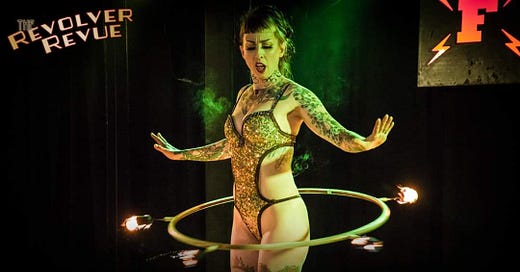




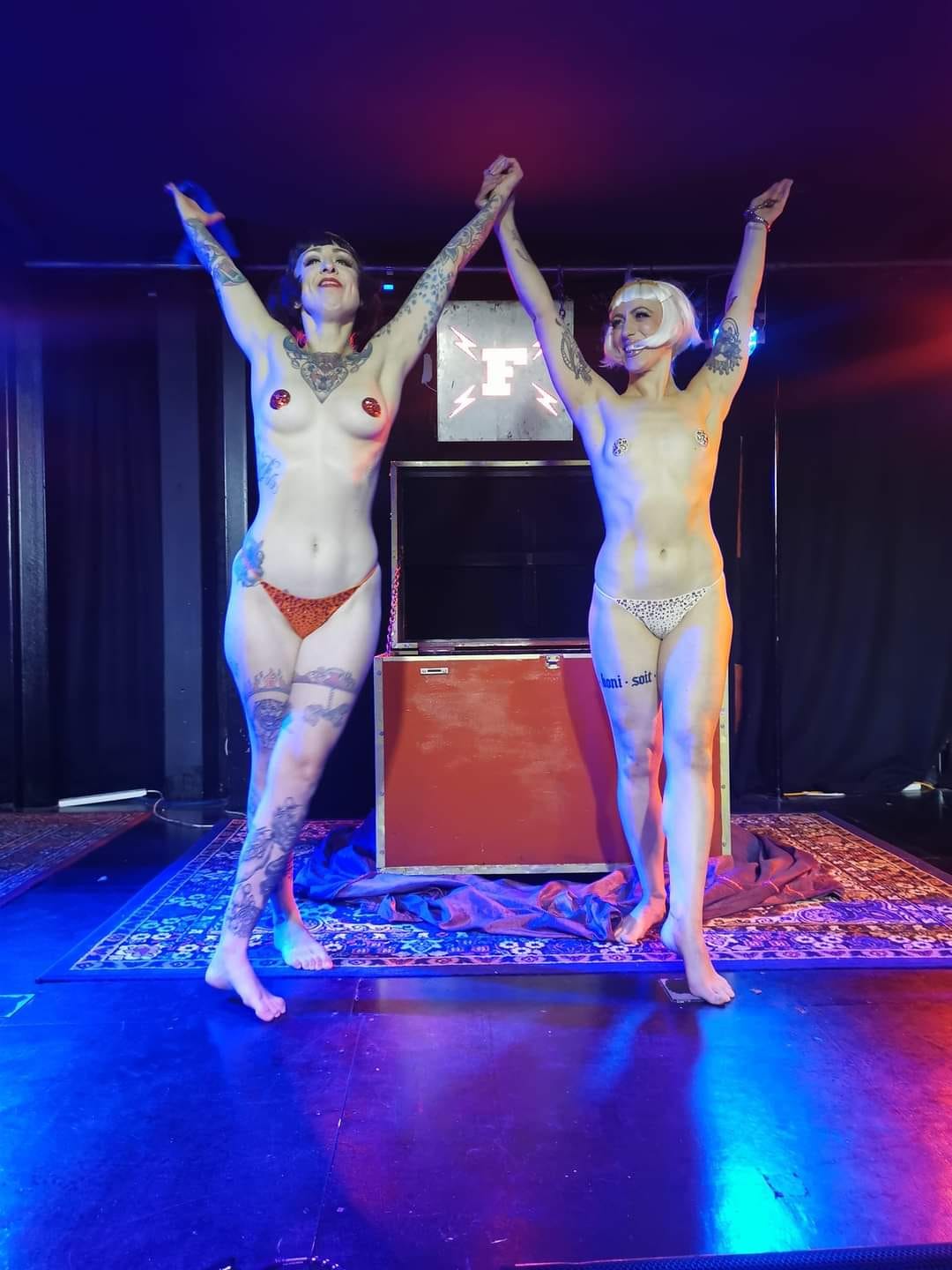
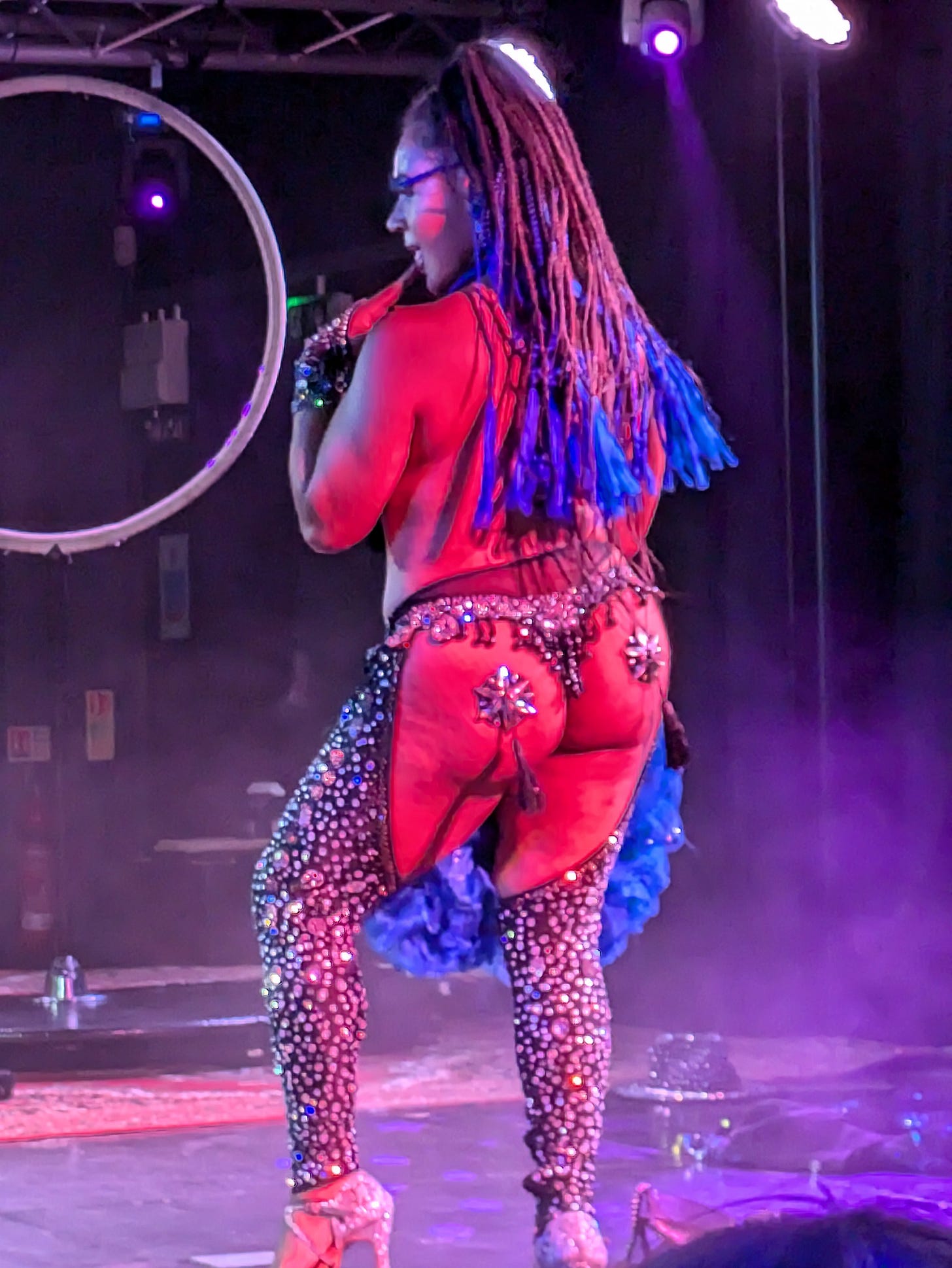
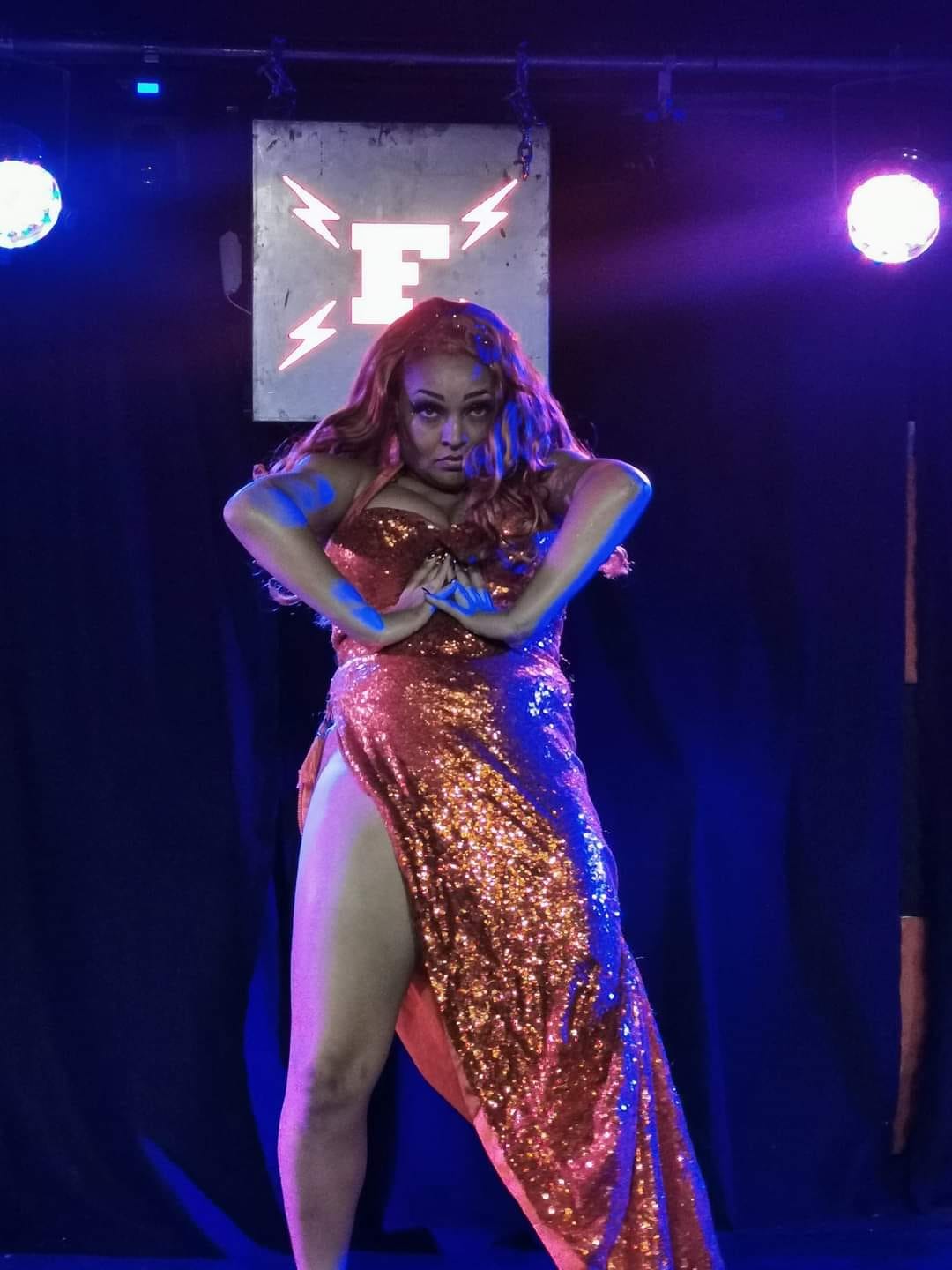
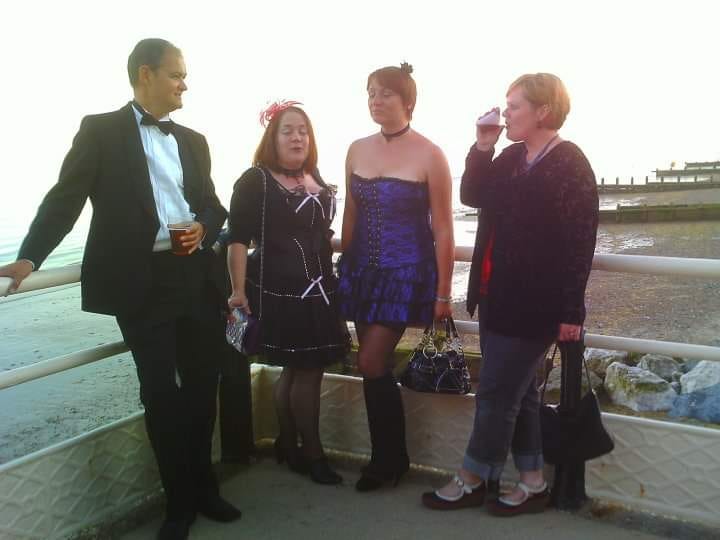

Go Fifi! Fascinating, I didn’t know any of this.
Thank you Judy. It is a fascinating subject with an interesting history - and so often misunderstood.